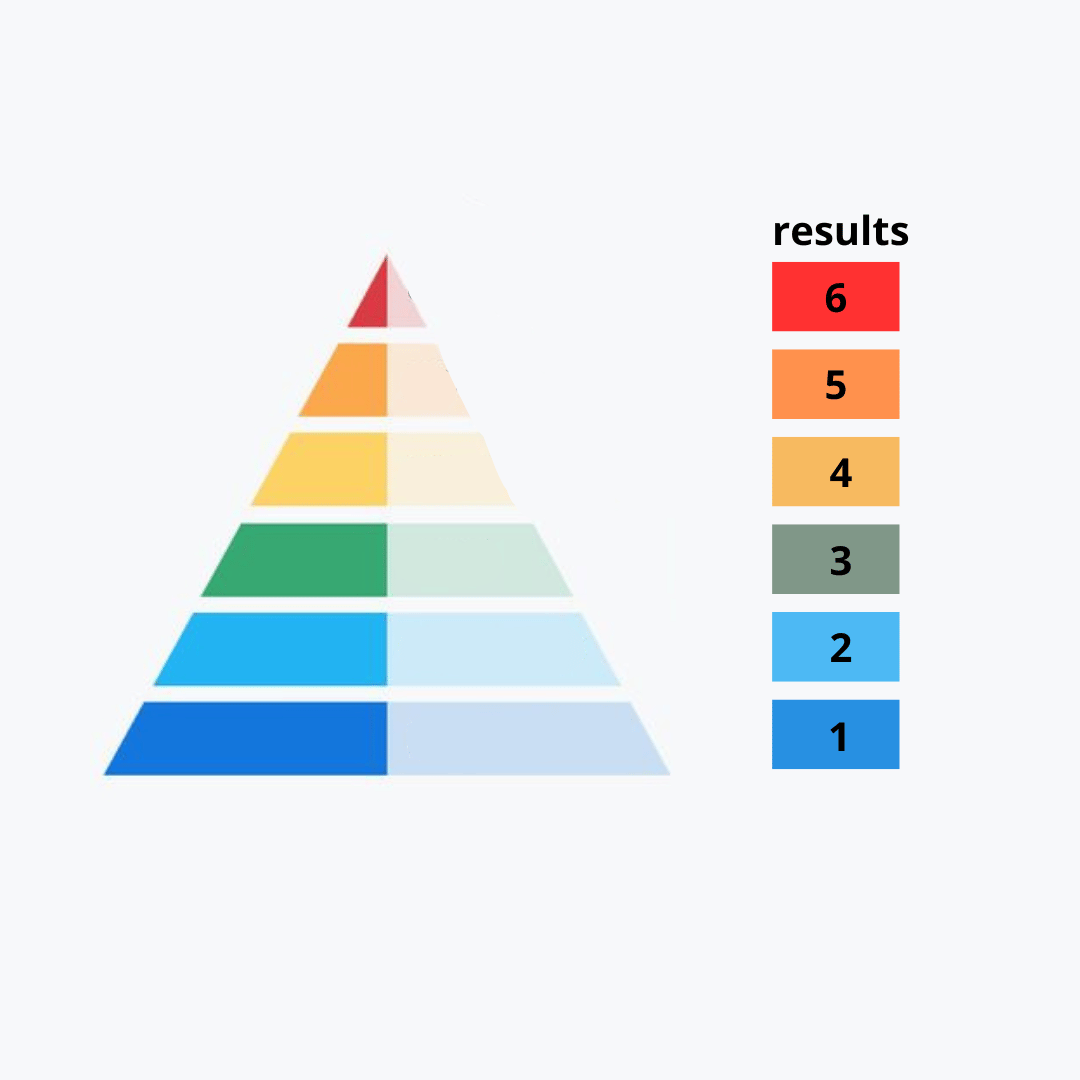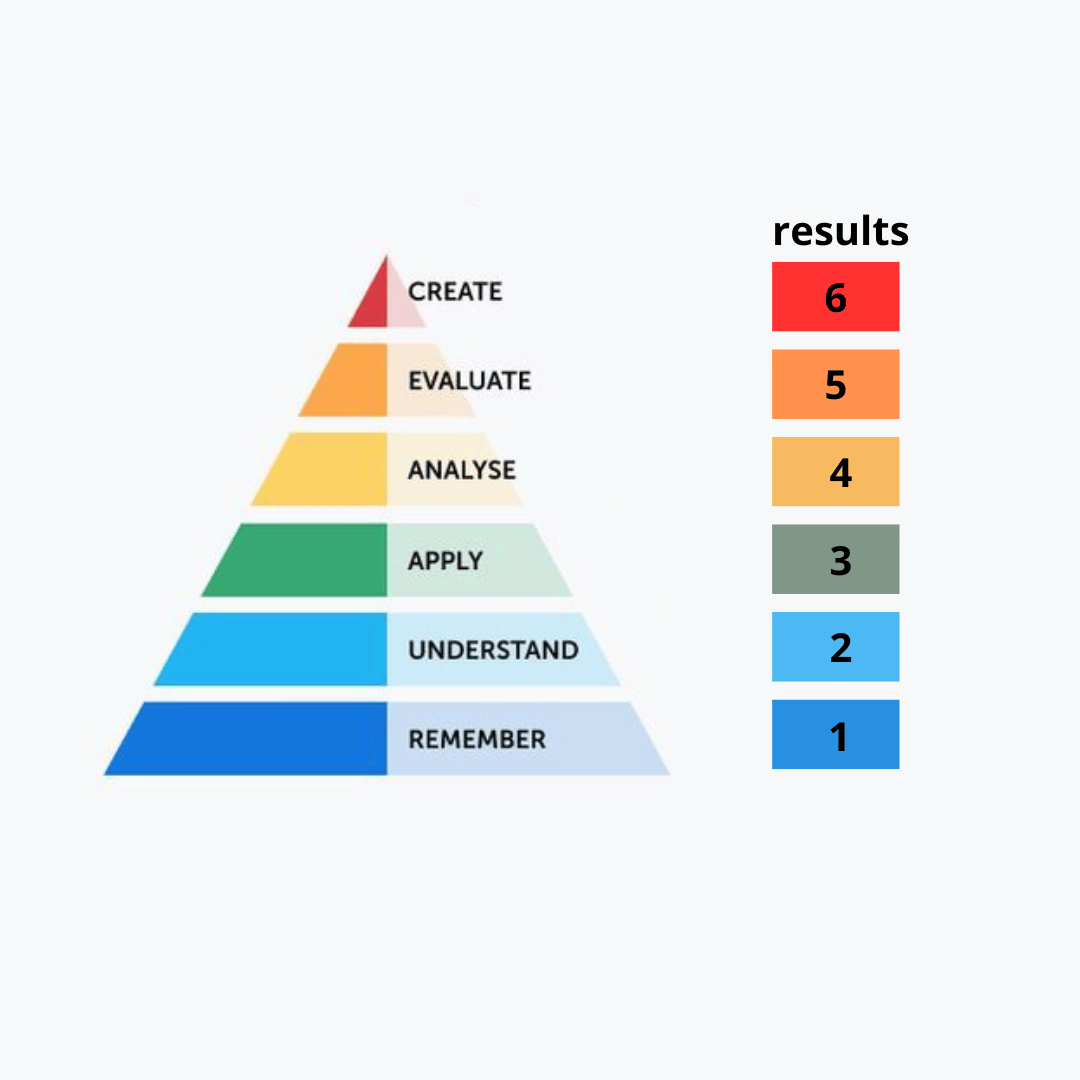- Verve Newsletter
- Posts
- Study Level of Thinking - How to level up your school game
Study Level of Thinking - How to level up your school game
In my first years in higher school, I was a good student.
I studied all day as best I could, and my grades were good enough to put me almost in the top tier most of the time.
As school progressed, this system slowly fell apart for two main reasons:
It wasn’t enough anymore
it was draining
Even though I was still studying more than most, my grades no longer reached the top.
Furthermore, the methods were not sustainable anymore. I spent all my days bent over my books., trying to memorize every detail and practice questions. I was constantly stressed, and still, the grades, not matching my efforts, were pulling my motivation down every day.
I just couldn’t understand what I was doing wrong. I was so focused on putting all my effort into studying my way that I couldn’t even realize that maybe it wasn't me; it was my method.
Like many other students, I did what I knew best, “studying”harder. But putting more effort in the wrong direction inevitably leads to losing motivation, interest, and focus.
Looking back, there is one thing I really wish I had known earlier.
Unfortunately, I came across this concept a bit too late. But now, I want to share this concept with you, to help you level up in the school game, starting now, and truly ace your studies.
The 6 Levels of Thinking
Many students face the same frustrating dilemma: they spend endless hours bent over their books, pouring their hearts and minds into their studies, yet their grades just don’t reflect their efforts. They feel overwhelmed and burned out, their motivation dwindling as they struggle to keep up with the demands of their courses. The real issue is not their dedication or intelligence; it’s that they are stuck in ineffective study methods that don’t yield the results they deserve.
This common problem stems from a lack of understanding of a crucial concept that can transform their approach to learning: Bloom’s Revised Taxonomy.
This powerful framework breaks down the 6 levels of thinking required for effective studying.
It is a fundamental concept, but yet many students have never heard of it.
At every level of thinking, there corresponds a level of results you can achieve by studying at that level. If you level up your thinking, you level up your results.
It might not make much sense now, but I promise it will soon.
Let's dive in.
Bloom’s Revised Taxonomy.

Level 1: Memorizing

This is the level of thinking where students tend to just memorize. So, repeating, rewriting, and reviewing constantly—all that is focused on just memorizing as much information as possible.
The level of results a student can get by studying at this level is answering questions that require listing, defining, and stating facts (the kind of questions less common in university and less useful in professional life).
Many students fall into this level of thinking. No judgment on that; it's how teachers often tell us to study. Study harder, remember better.
But this level alone is drawing and quite uneffective in learning.
Level 2: Understanding

This is the level of comprehension, where not only do you memorize the information but you focus on understanding the concepts.
A note: These are levels of thinking, not levels of studying. Intention here really matters. At a “physical” level, two people may study with the same technique, like reading a book. But what makes the difference between a person in Level 1 and Level 2 is the intention with which they are reading.
They may be reading in the same way, but one is focusing on rereading and memorizing, and the other is reading for understanding.
The results of level 2 are questions where you explain the concepts you’ve learned.
Level 3: Applying

This is the level of using what you understand to solve problems.
There are two levels of problems:
Simple problems: Direct use of knowledge. For example, in math or physics, where you learn a formula and then use it to solve a problem.
Advanced problems: Problems that require you to find the best way to tackle them, applying a combination of knowledge.
Level 3 of studying helps you solve the simple level of problems: what I call 1→1 problems.
To get to Level 3 of thinking, you can use techniques that involve solving problems and questions. You can find quizzes online and practice.
The Higher Levels
Level 4: Analyzing

This level involves comparing and contrasting. You look at the topic in relation to another piece of information. You connect the dots with other topics and pieces of information, reinforcing your comprehension and memory.
At Level 4, you can use techniques like tables of comparison, summaries of differences, mind maps for concepts, comparison questions, and Venn diagrams—any technique that forces you to compare one piece of information with another.
You can also ask ChatGPT to create some of these level questions. Here is a prompt:
“Give me questions [level of school you're in] and Bloom’s Revised Taxonomy Level 4 about [your topic].”
practicing these questions is a very effective method to shift to Level 4
The results of Level 4 have to do with any kind of comparison question.
One note here is that Bloom’s Revised Taxonomy was originally created not for students but for educators and exam writers. Therefore, these questions are the same ones your examiner will base theirs on.
At Level 4, you need to put in more mental effort, but that’s the benefit: it forces you to think deeper, which creates deeper knowledge and better memory. Studying at this level, you’ll go slower, but that’s not a bad thing! It means you’re doing it right. And it doesn’t have to be boring just because it requires more thinking and time. Actually, understanding information on a deeper level helps you feel like you're growing, which lights up your joy for learning and motivation.
Level 5: Evaluating

This is the level where, instead of just learning the information, you evaluate it: “So what?”
“What matters?” “Who cares?” “Why is this important?”
In this level, you start going back and forth in the material, searching to understand why you need to care, connecting all the information.
Results at Level 5 are generally the top results. You gain a deeper understanding of the information and prioritize it by evaluating it.
For many students, this is the top level for grades, and you don’t need to go to Level 6. But for a complete explanation, let’s see Level 6.
Level 6: Creating

This is the level of creating. It is a level required more in the last years of university, but I think it’s one of the most interesting and engaging for our brain.
The result has to do with hypotheses: creating an answer for something that doesn’t already exist in your knowledge.
You identify a gap and create a potential answer.
How to Ace Using the Pyramid

Most students, while studying, tend to go from the bottom up, from Level 1, where they memorize everything, to the higher levels.
The problem with this is that often it’s not linear. You tend to forget the information you gained at Level 1, so you have to go back and rarely have the time to reach Level 5. For most people, this does not work and is time-consuming.
To better your study, you can instead start from Level 5 and go down.
It may seem counterintuitive, but it actually works.
At Level 5, you remember better and fill in the other levels from the top down, like a waterfall.Your brain is much more efficient and interested in searching for answers and ways to fill the knowledge you need to study at Level 5.
You’ll gain perspective on what you’re studying and memorize better more quickly and efficiently.
Conclusion
Understanding and applying Bloom's Revised Taxonomy can significantly enhance your learning efficiency and effectiveness. However, the journey to mastering these levels of thinking can seem daunting without the right guidance and tools.
If you’re looking fo a comprehensive guide to not only understanding but also implementing these levels of thinking in your daily study routine I suggest you check out my ebook, "Fall in Love with Studying,"
The ebook provides detailed strategies, practical tips, and exercises that align with each level of Bloom's Taxonomy. Whether you're struggling with memorization, comprehension, application, analysis, evaluation, or creation, this ebook offers tailored solutions to overcome these challenges.
Outdated study methods can hold you back. Transform your approach to learning with "Fall in Love with Studying" and experience it , will make the difference in your academic journey.
Study smarter, not harder. You can reduce stress and achieve the grades you deserve. Grab your copy today and start leveling up your thinking and results.
I hope you gained a new perspective on studying and the approaches you can apply to improve your results.
Let me know if this newsletter was helpful and what you’d like to see next!
Talk to you soon,
Isa
